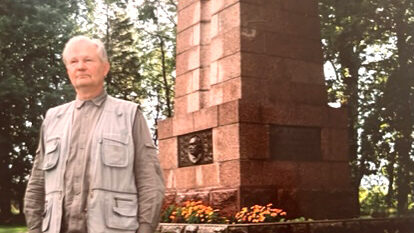In spite of this there are a substantial number of opponents to the signing of a new treaty and they have vociferously rejected the diplomatic gains to be made with an agreement with Russia. They insist that a new treaty will not be the factor in ‘normalizing' relations with the Kremlin.
Some opponents stress that Moscow wants and needs the treaty more than Tallinn does. They say that Estonia has thrived without a treaty with Moscow for years and will continue to do so. Before Estonia's accession to the European Union and its admittance into NATO many observers insisted that the absence of a border treaty would be a major obstacle to membership. It wasn't.
The countries' respective foreign ministers Urmas Paet and Sergei Lavrov signed treaties on the land and maritime borders between Estonia and Russia in 2005. Thereafter the Estonian parliament ratified the treaties in June of the same year after adding a preamble to the ratification indicating that in accordance with Article 122 of the Estonian constitution the treaty would partially adjust the state border as detailed in the Tartu Peace Treaty of 1920 but would not affect the rest of the Tartu Peace treaty and would not have any bearing on any bilateral issues not connected with the border treaty. The preamble also referred to earlier declarations in 1991 and 1992 both of which stressed the principle of uninterrupted continuation of statehood since 1920. (This is the same as the principle of non-recognition de jure of the of the Soviet annexation of the Baltic states, the principle by which western countries continued to support the legitimate demand for self-determination of the three republics.)
The Russian government refused to pass the treaty on to the Duma for ratification and Vladimir Putin angrily nullifying it explaining that the preamble gave Estonia the opportunity to make future territorial claims against Russia. One must note that the preamble did not contradict the text of the border treaty itself. In spite of this the Kremlin disregarded Estonia's insistence that it has no intention of pursuing territorial claims. Most observers saw in Russia's withdrawal of its signature their fear that the mention of the Tartu Peace Treaty would imply their affirmation of such notions as Soviet aggression in 1940 and the ensuing 50-year post-war occupation.
A more complete explanation of Russia's view is the following: The statehood of Estonia ceased to exist in 1940, when the republic “joined the USSR voluntarily”. Endorsing the view that the 1920 Tartu Peace Treaty is “Estonia's birth certificate” (as Lennart Meri succinctly put it) that has never lost validity, would translate into an implicit recognition by the Kremlin of its tiny neighbour and the underhanded political manipulation and coercion that Andrei Zhdanov (Moscow's emissary in control of Estonia in 1940 when the Soviets invaded) employed in order to accomplish Estonia's accession to the USSR. Amongst other tactics these included the elimination of the country's leadership and parliamentary elections that were completely rigged. As mentioned above, by placing any importance at all in the Tartu Peace Treaty, Moscow is convinced that Estonia could reclaim the adjacent territories in the east and southeast that Stalin had taken from occupied Estonia at the end of WWII.
Stalwart supporters of the principles of the Tartu Peace Treaty insist that it is in Estonia's national interest to guarantee that no border treaty violates the basic tenets of the Tartu Peace Treaty which truly can be considered the country's “birth certificate”. In addition they claim that no other state be allowed to inhibit Estonia's sovereign right to add an explanatory note upon ratification that clearly defines the relationship between the new treaty and the Tartu Peace Treaty.
The Tartu Peace Treaty supporters see the currency of the Tartu historical document. They say it's as vital now as when the Soviet Union occupied Estonia in 1940. Some non-Estonians see the success of the Estonian political system resulting from the fact that Estonia has had de jure sovereign statehood since 1920, even during the period when Moscow denied its de facto existence.
In all likelihood the current border treaty accepted by the Estonian government will eventually be ratified by Estonia's parliament. But the long arduous road to this conclusion will not eliminate the mutually exclusive visions of the Soviet era. It's been indicated that the final phase of the negotiations were conducted in a friendly ambience. In the past President Ilves has urged Russia who has claimed to be the legal successor to the USSR to apologize for the crimes committed by the Soviets. By so complying Russia would in essence admit that it occupied Estonia in 1940 and 1944 and thus the Tartu Peace Treaty would still be valid. Closure will come for the border issue, but not for history.
Laas Leivat




